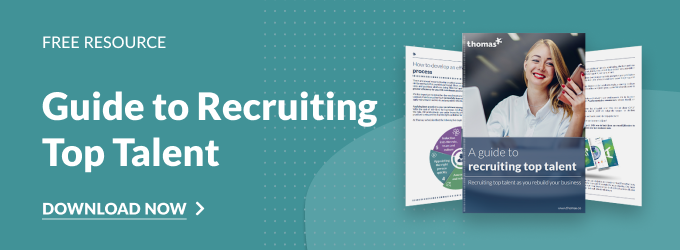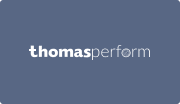It’s true that recruitment KPIs may not be high on the list for hiring professionals but they are important and can inform the business of many different things that they may not have been aware of beforehand.
From using resources more efficiently to improving processes and winning over more management and top talent, recruitment KPIs can be an essential tool to getting success with your talent acquisition.
In this guide you will learn about the KPIs in recruitment, why they are important and the top recruitment KPIs that leading organizations use around the world.
What are KPIs in recruitment?
Recruitment KPIs are specific metrics designed to measure the strength and effectiveness of your overall recruiting activities. They can reveal areas of improvement and show the value and return on investment of specific initiatives. They are a key piece of both evaluating and planning out your recruiting strategy and are tied into the long and short term goals of your organization.
Recruitment KPIs provide slightly different insights for different areas of a business. For managers, recruitment KPIs provide an insight into the time taken to fill roles whilst for a recruiter, it can be a quality indicator of the candidates. Each area will have a different stance on what works best for them and what doesn’t.
Essentially they should form part of your recruitment strategy analysis and planning.
Why are recruitment KPIs important?
Recruitment KPIs matter because they are giving an insight into all of the things your organization is doing to find the top talent. They help to quantify what is working and also, what is not working - so you can save time and money on initiatives.
Another key to all of this is that recruitment KPIs are all digital. There is so much data you can gather so it is irresponsible to overlook what is a clear advantage in order to get better at recruitment.
Other reasons as to why recruitment KPIs are important include:
- They quantify specific aspects of the recruitment process.
- They identify what’s working - and what may need improvement.
- They reflect goal achievements and success.
- They provide strategic insight into HR efforts - which is great for management visibility.
- They provide insight into the experience of candidates
- They assess the satisfaction of hiring managers.
- They can give you a bench-mark to work towards - especially as a comparison in your industry and historical data
Top recruitment KPIs
It can be hard to understand or even select which recruitment KPIs are the most important or relevant. There are so many to choose from, and as our understanding of data gets better we can continue to build on these KPIs making the task even harder in some cases.
With that being said, there are some standard KPIs which we believe are right for an organization.
All KPIs must be clear, relevant and meaningful. They must be easy to understand and can be easily explained when required to do so.
Different metrics - in some cases - can be collected and tracked automatically - saving time and effort. This further adds to the importance of recruitment KPIs and their usefulness as well.
Equally important is the distinction between quantitative KPIs and qualitative KPIs.
Quantitative KPIs - are purely to the duration of various steps, like the number of applicants or the cost of new hires.
Qualitative KPIs - are more about how things turned out, like candidate quality of satisfaction.
In this next section we are going to explain some of the most important and noted KPIs and why they are important to your organization:
1. Time to hire
Time to Hire refers to the amount of time that passes between when a job candidate is initially contacted by a company and when they accept the employment offer. This is often confused with time to fill which measures the number of days it takes to fill an open position. The use of an average Time to Fill metric is widely used but again, this varies from Time to Hire.
The Time to Hire metric is important because it can clearly show how long your recruitment efforts are taking. A slow time to hire can harm organizations in various ways and damage employer brand making it hard for top talent to not only drop out of the recruitment process but also recommend your business to other great candidates.
2. Cost per hire
Cost per Hire relates to the actual or estimated cost of each new hire. It should include things like:
- Advertising the vacancy on job sites
- Referral fees
- The time the recruitment team spends on it
- Onboarding and interview time
- Any employee training and new equipment cost
This is important as it gives a better understanding of the total recruitment budget and spending to get a new hire.
3. Quality of hire
If your organization is hiring from many different sources - i.e. recruiters, linkedIn, direct applications - how are you going to measure the quality of each recruit and then apply a strategy to find equally good candidates if you don’t know where they are coming from?
This metric is difficult to quantify but it can provide insight into whether the recruitment team identified the best candidate for a role and where they found them - which is important for future recruitment initiatives.
4. Candidate experience (Net Promoter Score)
The Candidate Experience also known as the Net Promoter Score is a KPI which measures the applicant/candidate experience during the recruiting process.
Candidate NPS provides insight into how likely candidates are to recommend your company based on their recruiting experiences. A poor candidate experience could decimate recruitment efficiency. For instance, if your candidate describes a slow screening or application process, it can directly affect your company’s reputation.
5. Sourcing channel efficiency
Sourcing Channel Efficiency has two other related metrics, these are:
- Channel effectiveness
- Source quality
This is a measure of the various candidate sourcing channels and the quality/quantity of candidates derived from them.
It helps to ensure investment is applied to the most effective, useful candidate sources.
6. Number of qualified candidates
This KPI provides valuable insight on how effective sourcing efforts are at attracting and moving qualified candidates through your recruitment pipeline.
You need to have a clear definition of what a qualified candidate is. You can do so by having a conversation with your HR team and understanding who came through the process with the necessary skills/abilities.
A lack of qualified candidates could point to poor source quality, incorrect or misleading job descriptions, or an ineffective screening process.
7. Interview to offer ratio
Simply put, an Interview to Offer Ratio is the ratio between the number of interviews conducted and positions offered.
The optimum ratio is considered to be 3 to 1.
Interviews are time consuming and expensive. High interview to offer ratios result in higher costs per hire - and can reflect poor candidate experiences.
8. Offer acceptance rate
This is generally represented as a percentage. Calculated by dividing the number of accepted job offers divided by the total number of offers made (x 100).
If people aren’t accepting offers this can indicate something is wrong - e.g. compensation package, company reputation...
9. Hiring manager satisfaction
This metric is a measure of how satisfied those in charge of the hiring process are with recruitment. Whilst it may not seem obvious at first, this is arguably one of the most important recruitment KPIs.
The hiring manager is not part of the HR team - they are the managers who need new staff and therefore have other issues and pressures they must resolve operationally. That’s why their satisfaction level has to be both in the time of filling a post and the quality of the candidate.
Their satisfaction can be assessed using surveys.
10. Adverse impact
Adverse impact results from employer practices that seem to be neutral but that disproportionately and negatively affect protected groups such as women and minorities.
By measuring this, it enables the identification of bias in recruitment processes.
The Four-Fifths rule states that if the selection rate for a certain group is less than 80 percent of that of the group with the highest selection rate, there is adverse impact on that group.
E.g. an organization is looking to fill 25 open positions in its local call center. 500 men and 1000 women apply. Of those applicants, 10 men and 15 women are hired. In this situation the selection rate for men is 2%, while the selection rate for women is 1.5%. Dividing 1.5 by 2 we get 75%: below the cutoff. Despite the fact that more women were hired overall, they were adversely impacted.
Moving forward with these KPIs
Whilst recruitment KPIs aren’t the most attractive or engaging subject in the world, they provide insights into the recruitment process which can have a substantial impact on how you recruit, who you recruit and the overall performance of your organization.
Trying to attract top talent today is getting harder and harder. Recruitment KPIs can give you the necessary insights to make that easier. The Thomas Recruitment Platform can help provide data and analytics into your recruitment strategy. Consider this platform if you wish to get a better understanding on where you can succeed in attracting the top talent.







